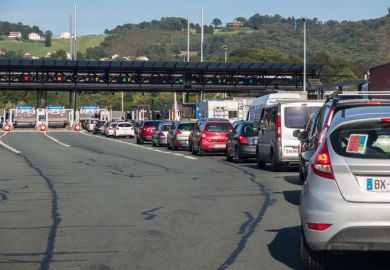It is impossible to be conclusive about the effects of the Covid-19 pandemic on student mobility and international education provision. However, we have enough information to reach five broad judgments and can make educated guesses about other factors.
First, in biological and global terms, it is the same pandemic everywhere, mobility is universally affected and the international education sector will take a massive hit. Countries and institutions financially dependent on international students will have a large financial hole that many cannot fill through their own efforts alone.
Second, the temporary shift to online education will have a lasting impact but the nature of that impact will be affected by the duration of the pandemic.
Third, the pandemic has started at different times, nations have varied governance and health systems, student source countries will be affected to a varied extent and recovery from the pandemic will be staggered and uneven. This will shape later student flows.
Fourth, in the recovery, international education will shift from a sector primarily shaped on the supply side – via visa policies and managed numbers in individual universities – to a buyers’ market where incoming students are scarce and competition to recruit them is more intense.
Finally, questions of health security, including the comparative reputation of countries in relation to health care and emergency assistance, will be forever more important when families and students make decisions about international student mobility.
Among the known unknowns are the severity and duration of the pandemic. Is it seasonal and will it recur at scale? Will it mutate? To what extent does exposure create immunity? When will we have a vaccine from the impressive collaborative efforts of scientists?
In most of the world the most likely scenario is a pandemic duration much longer than the two- to three-month cycle in China, Japan and South Korea, where governments tested and traced cases comprehensively, managed population movement and ramped up health care.
Western Europe moved later and is facing a larger outbreak although it is now locked down. The English-speaking countries have been less thorough and are paying the price. Russia has done little. Meanwhile, efforts in India, Pakistan, Bangladesh and Nepal and much of Africa will be even less effective than in Europe.
The pandemic’s duration will be more prolonged because of “suppression” strategies designed to flatten the curve to lower the spike in casualties and reduce the pressure on health systems.
In this context it is unlikely that normal face-to-face higher education will resume at the beginning of the northern hemisphere’s academic year in September/October 2020, except perhaps in East Asia. It might resume in Australia and New Zealand in March 2021, with northern hemisphere students returning then or later.
If the next academic year begins on an online basis, platforms will need to be better quality than the temporary – and sometimes brilliant – adaptations now being put in place.
The crisis will accelerate the development of online education not as it has mostly been up to now – as an adjunct to traditional classes, or a pale imitation of face-to-face education at the same price – but as a distinctive form or product in higher education, with different ways of using information, different interpersonal relations and different pricing structures.
Demand for face-to-face higher education will not decline in future. The organic classroom has personal and status benefits that cannot be replaced. However, more lower tier institutional providers will move exclusively into online education.
The key question is the scale of demand once recovery begins. Once the immediate constraints on physical mobility and group gatherings are lifted, the decisive factor will be the effects of a reduction of 5 to 15 per cent in global GDP on students’ capacity to pay for fees, travel and student living costs.
The size of the global middle class will shrink dramatically on a temporary basis, especially in the emerging economies, with a corresponding drop in globally mobile students. It will be five years or more before the 2019 numbers return.
As with all large-scale social changes the effects will play out differentially. In this case the normal “iron law” – that in a competitive situation, the strongest have the edge – will be modified by national policy factors.
English-speaking countries will retain their stellar power of attraction in global higher education for the foreseeable future. Yet East Asia’s star is rising. It was already rising economically and will now rise further in international education because of strong health and governance regimes and the bounce back factor.
As societies the UK, US and Australia will recover from the pandemic more slowly than Japan, China and South Korea. This means that part of the East-to-West student traffic will shift into East Asian mobility traffic and some of that change will become permanent.
Meanwhile, the negative medical and economic effects of the pandemic will be greatest in South Asia and sub-Saharan Africa and student outflows from those countries will take longest to recover.
A buyers’ market has new rules. For example, if there is a fall in the number of Chinese students entering the UK, this is unlikely to be covered by growth in students from India, as might have been expected prior to the pandemic.
But much will be determined by the specific policies that each country introduces to foster inward student mobility and global engagement – for example subsidised scholarships and free exchange of the Erasmus type; visa regimes; support for student housing, work, welfare and health; promotion of international education in specific source countries.
All inherited policies and strategies will be rethought. It is a new and very challenging world.
Simon Marginson is director of the Centre for Global Higher Education in the Department of Education at the University of Oxford.
Register to continue
Why register?
- Registration is free and only takes a moment
- Once registered, you can read 3 articles a month
- Sign up for our newsletter
Subscribe
Or subscribe for unlimited access to:
- Unlimited access to news, views, insights & reviews
- Digital editions
- Digital access to THE’s university and college rankings analysis
Already registered or a current subscriber?








